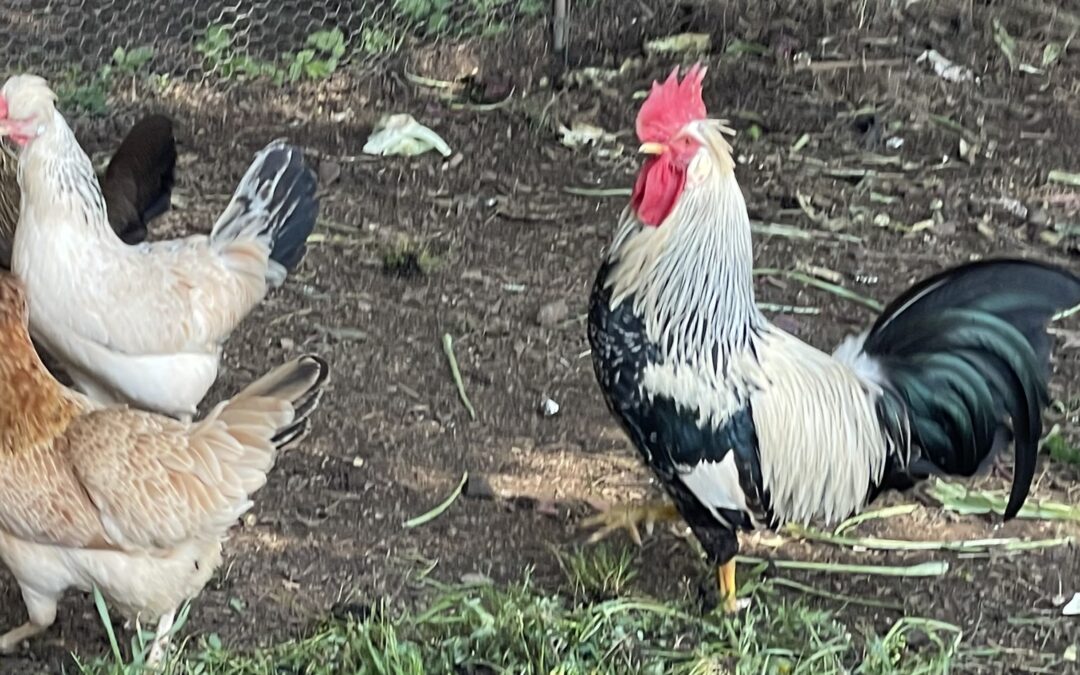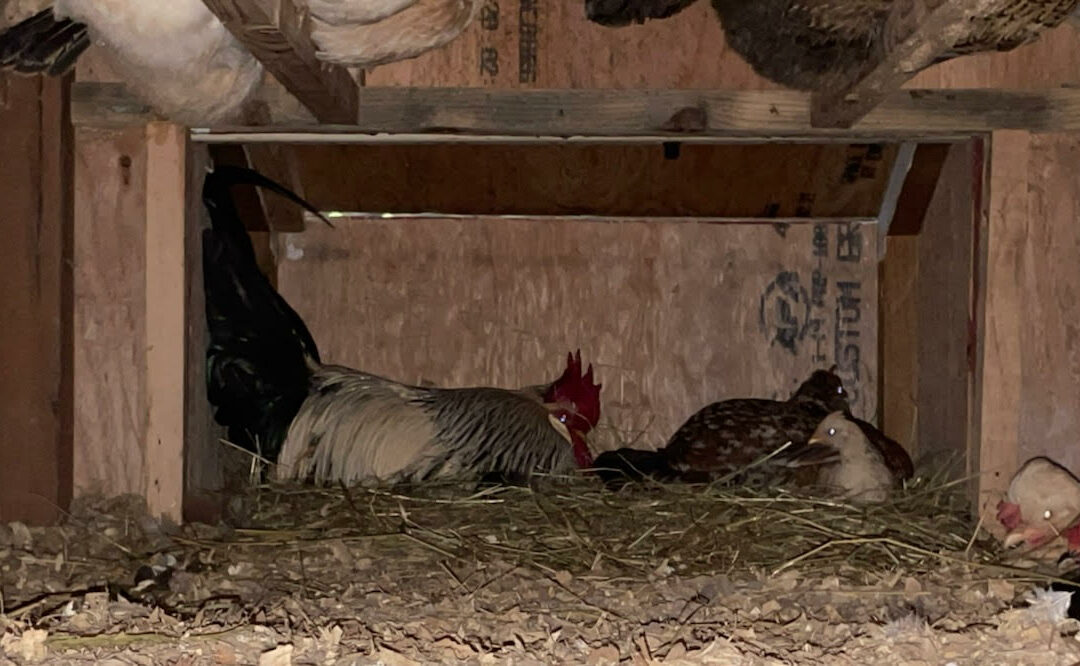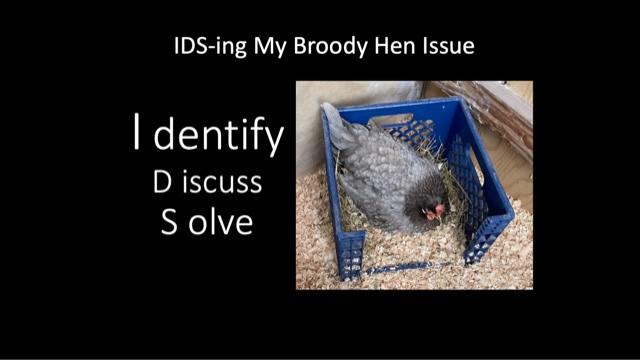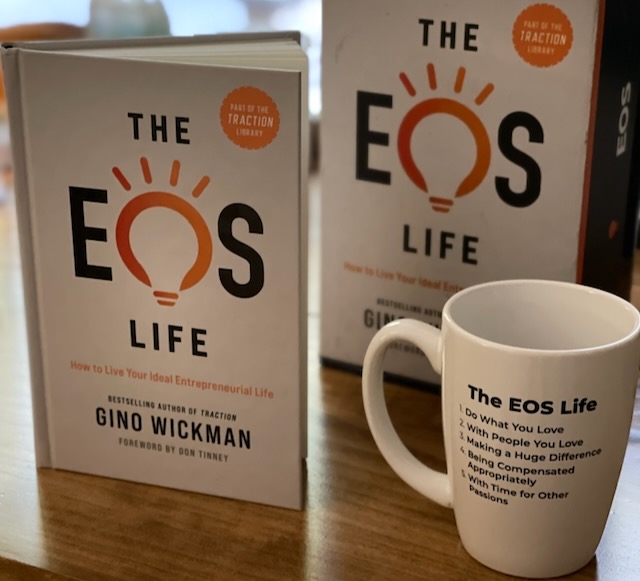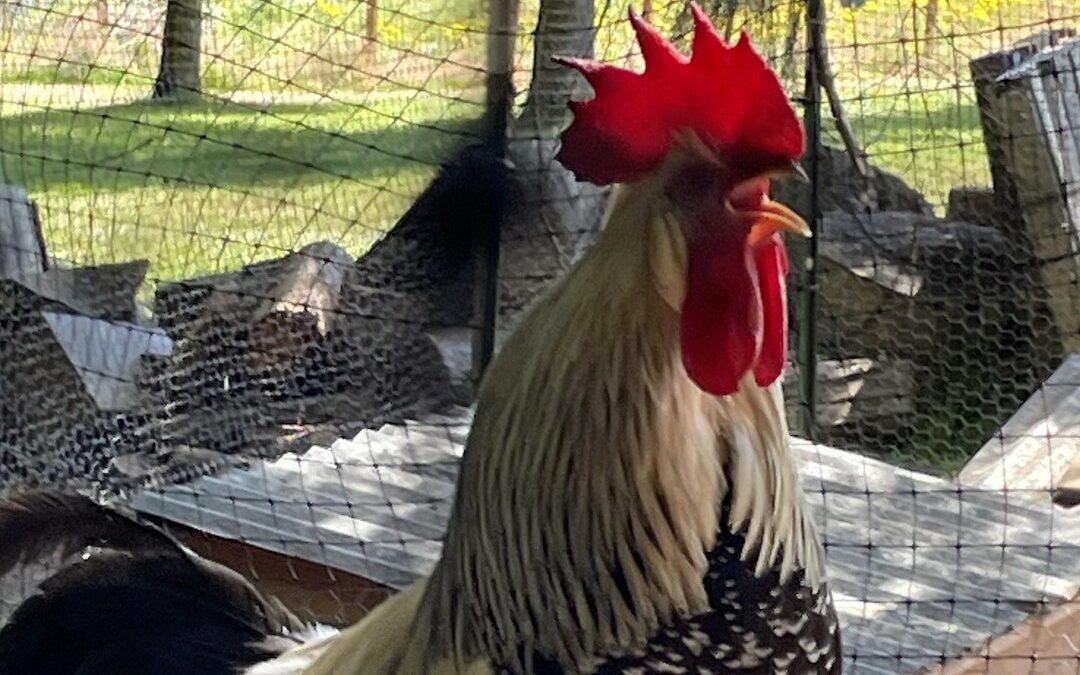
Hei Hei the Chicken Terrorist
Have you ever worked with someone who was a real suck-up when the boss was around, but after she disappeared, he would be mean and nasty to the rest of the team? It’s like working with two different people, neither of them particularly enjoyable.
It appears I had this situation with my rooster, Hei Hei. After my experience with Oden, my late mean rooster, I thought Hei Hei was a great rooster. I was able to enter the coop without fear of him flogging me, I could tend to the food and water without worrying about his whereabouts, and when I did approach him, he would run away, not fly towards me like Oden did.
A month or so ago, Mike started suggesting that we should get rid of Hei Hei. We had plenty of peeps, so his “services” weren’t needed any longer, and the 4:30 AM crowing was getting old. But, I kept telling Mike, “He is such a nice rooster.”
A few weeks ago, I went up to the coop and found that one of my May peeps was walking like a penguin. I asked my chicken whisperer if she could check him out. Her inspection revealed that the peep was severely underweight and malnourished. What happened to him, you ask? Well, Hei Hei realized he had some competition from an up-and-coming rooster and kept him from eating and drinking. Apparently when a rooster walks like a penguin, he is showing submission to another chicken, in this case our rooster.
We separated “Penguin” from the flock and started adding apple cider vinegar to his water and feeding infant vitamins to him. He has gained the weight back, but he is still walking like a penguin.
This incident made me turn my attention to Hei Hei, and I realized how aggressive he was being with the hens. My focus had been on how he was treating me, not on how he was treating the rest of the flock. So, I agreed with Mike that we could remove him from the flock.
We had four choices for removing him:
- Kill him
- Kill him and eat him (not a viable option since I don’t eat our chickens)
- Take him to the feed store where he would be rehomed (I think that is code for someone else eating him)
- Take him to the fowl auction.
Read below to see which option we chose.
Do you have any Hei Heis in your organization? Employees that you know aren’t treating other employees well but are nice to you or giving you as an owner or manager what you want? Have you considered the impact these people can have on productivity, morale and employee engagement within your organization?
I was recently reading about the Welch Matrix, designed by Jack Welch, former CEO of General Electric. He classified his team members into categories based on performance and values match.
- Stars: High performance and high values match (In EOS language, these are Right People in the Right Seat).
- Terrorists: High performance and low values match.
- Potential Stars: Low performance and high values match.
- Deadwood: Low performance and low values match.
If you don’t address your low-values-match employees, you risk losing your stars or your potential stars. Worse yet, your stars could exit your organization, leaving your terrorists and deadwood to train the potential stars. Will those potential stars become stars or terrorists?
Be courageous when you see someone who doesn’t exhibit your core values. They can erode your organization’s culture in ways you can’t even imagine. Yes, addressing the issue can be scary, and it could impact your organization, but it won’t be as bad as you imagine. Just yesterday, a president of a company shared that she had known for two years she had a wrong person in her organization but was hesitant to remove them, due to a lack of technical expertise internally. She finally reached the point where she couldn’t wait any longer. Her thought after she addressed the issue? “I wish I had done this two years ago.”
Once the problem with Hei Hei was pointed out, I did act, but unfortunately, I think the damage to Penguin is permanent. What kind of damage are your employees suffering from with your “Hei Hei,” and will they be able to recover once you address the issue?
If you need help deciding how to handle your Hei Hei, or if you want to know how much we auctioned off Hei Hei for, send me an email. The situation won’t go away until you take decisive action.

